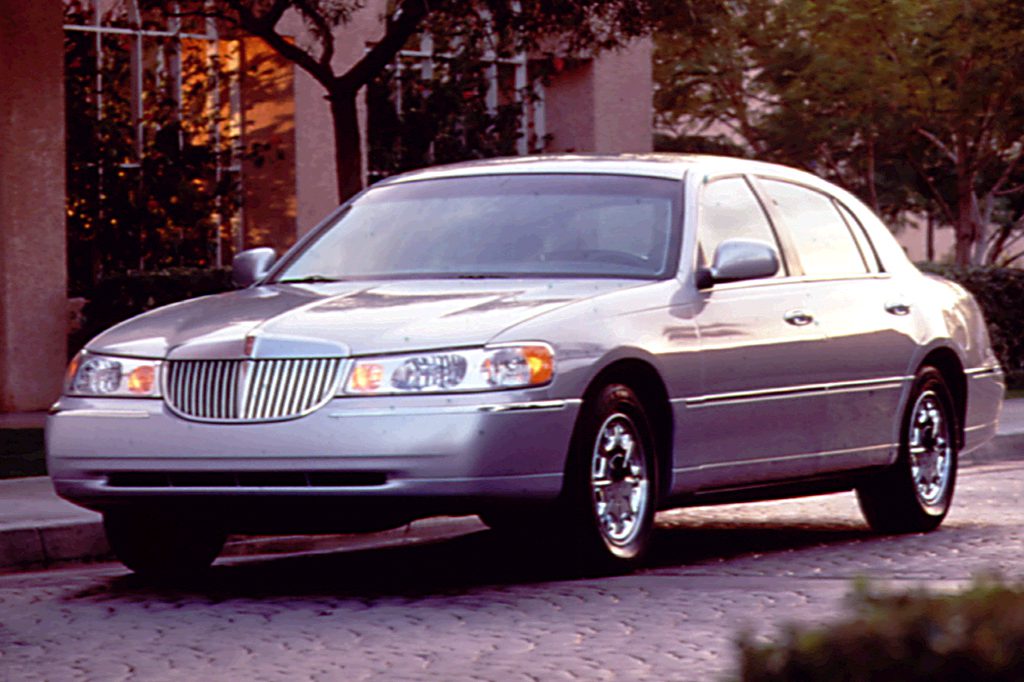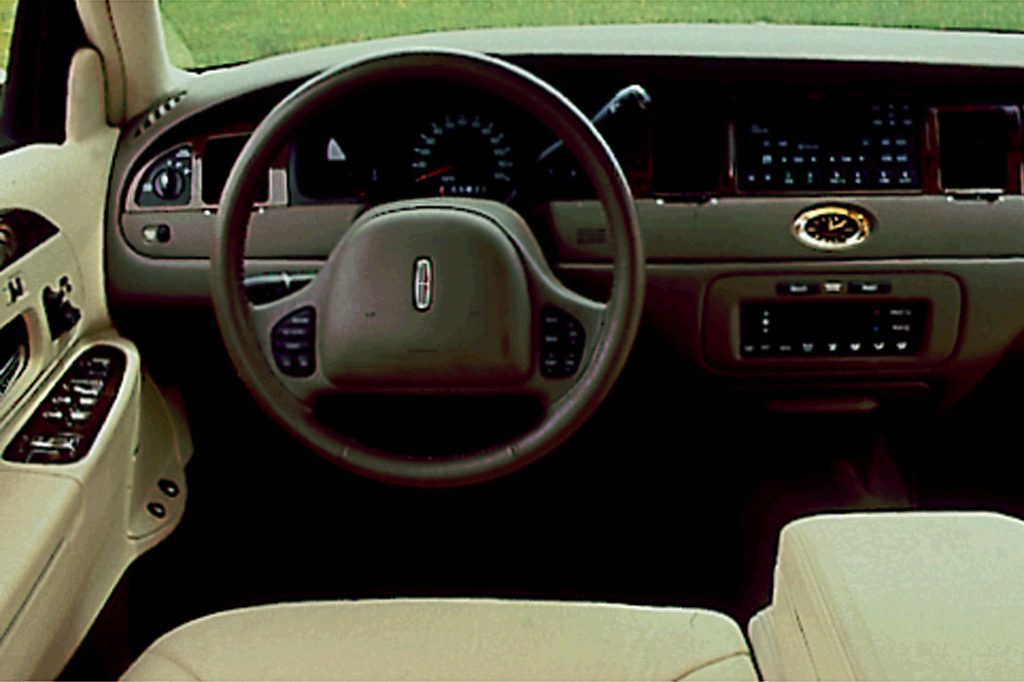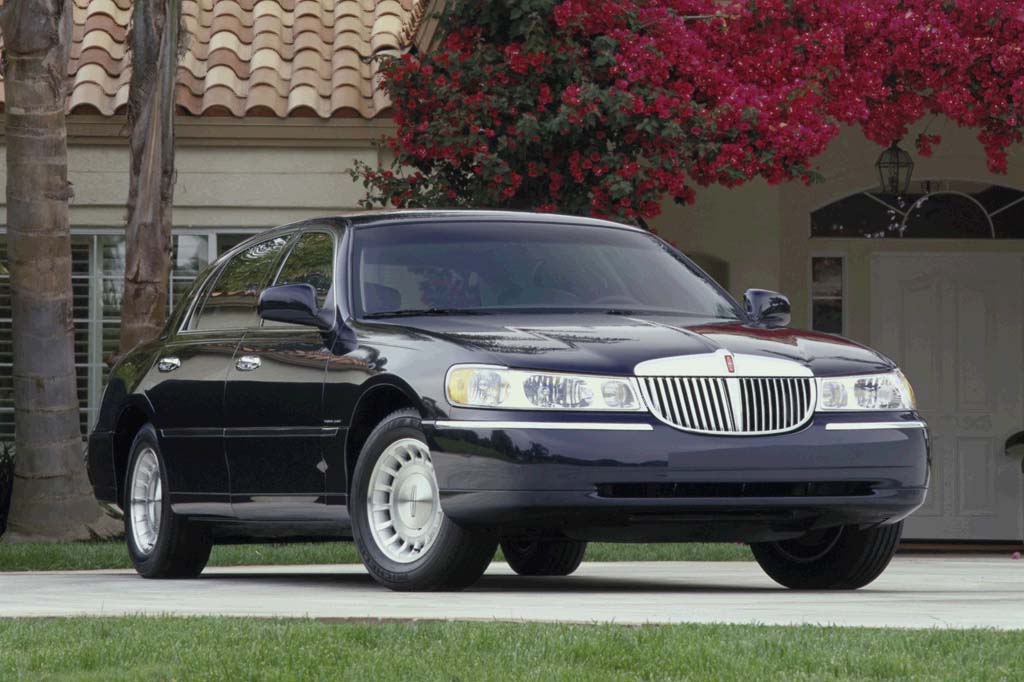| Premium large car; Built in USA |
|
|
| Good condition price range: $2,500 – $6,900* |

1998 Lincoln Town Car

1998 Lincoln Town Car

1998 Lincoln Town Car interior

2000 Lincoln Town Car

2000 Lincoln Town Car
| Pros: |
|
| Cons: |
|
Lincoln’s Town Car is the last remaining American-brand, rear-drive, full-size luxury sedan. So, potential buyers aren’t overloaded with alternatives. Fortunately, the refined Town Car continues to offer the traditional luxury-car values of spaciousness and splendid riding isolation, as well as a load of comforts and conveniences. Although we give higher marks to the latest front-drive Cadillac DeVille as a domestically built luxury automobile, the Town Car is worth considering–and priced far below imported competitors.
Overview
Redesigning of the only American-brand rear-wheel-drive, full-size luxury sedan slashed nearly 200 pounds from the Town Car’s weight. Overall length of Lincoln’s “flagship” model was trimmed by three inches, though the car remained quite large. Appearance also changed markedly from the prior generation, which had been on the market since 1990. Three models went on sale, in escalating levels of opulence. The 4.6-liter V8 engine made 200 horsepower when installed in the base Executive or midlevel Signature model. In the top-line Cartier edition, the V8 added dual exhausts, which helped boost output to 220 horsepower. A Signature Touring option included the 220-horsepower V8 and a firmer suspension. A 4-speed automatic transmission was installed in all models. Antilock 4-wheel disc brakes were standard. All Town Cars had traction control, leather upholstery, and a 40/20/40 front bench seat, for 6-passenger capacity. Side-impact airbags were not available. Rivals included the Cadillac DeVille, Jaguar XJ sedan, and Lexus LS 400.
Yearly Updates
| 1999 Town Car Front side airbags went into the 1999 Town Car, as standard equipment. Front-seat power controls moved from the seat side to the door panels. |
| 2000 Town Car Safety enhancements arrived for the 2000 models, including an emergency escape release inside the trunk, rear child-seat anchors, and Belt Minder (a chime and warning light to encourage buckling-up). Those changes also went into other Ford products. |
| 2001 Town Car All Lincolns got free regularly scheduled maintenance for the first three years/36,000 miles starting in 2001. Town Car also gained 25 horsepower and power-adjustable pedals. |
| 2002 Town Car The biggest ’02 change was to treat option packages as separate models. Versions included the base Executive, regular Signature, Signature Touring, Premium, Premium Touring, Cartier, Cartier Premium, and Cartier L. An in-dash CD changer was newly standard. |
